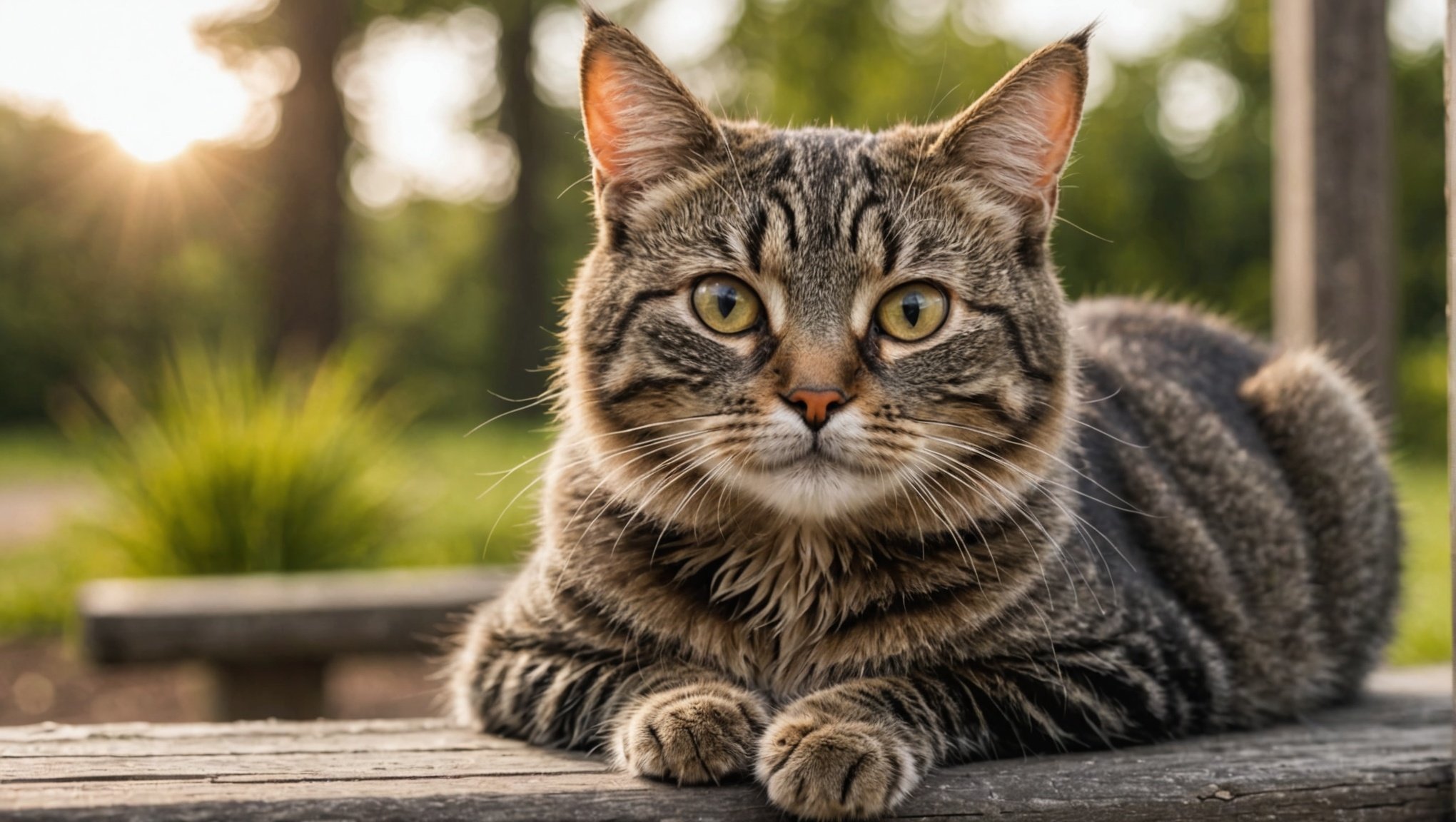Outdoor adventures can lead to flea and tick infestations for our feline friends. Recognizing the risks involved is the first step. Safeguarding your cat means implementing a comprehensive prevention strategy tailored to their outdoor lifestyle. From topical treatments to environmental controls, every option counts. Explore practical and innovative solutions that address both prevention and treatment, ensuring your beloved companion stays healthy and happy while exploring the great outdoors.
Understanding the Importance of Flea and Tick Prevention for Outdoor Cats
Outdoor cats face significant health risks from fleas and ticks, which are common parasites in many environments. These pests can cause discomfort, transmit diseases, and lead to severe health issues for both cats and humans. Flea and tick prevention is crucial to safeguard the well-being of outdoor cats.
A voir aussi : Understanding Feline Urination Issues: Effective Solutions and Potential Causes for Inappropriate Behavior
Fleas can cause allergic reactions and dermatitis in cats, leading to excessive itching and skin infections. Ticks, on the other hand, are known carriers of serious diseases such as Lyme disease and haemobartonellosis. These conditions can severely impact a cat’s health, causing symptoms ranging from fever and lethargy to more severe complications like anaemia and organ damage.
For humans, the presence of fleas and ticks in the home can lead to infestations and potential disease transmission. Hence, implementing a comprehensive prevention strategy is essential for maintaining a safe and healthy environment for both pets and owners.
En parallèle : Welcoming a New Baby? Essential Tips for Easing Your Cat into the Family Transition
Effective flea and tick prevention involves regular use of topical treatments, oral medications, and environmental control measures. These strategies not only protect cats from infestations but also reduce the risk of disease transmission to humans. By prioritising flea and tick prevention, pet owners can ensure their outdoor cats remain healthy and happy.
Key Components of an Effective Prevention Strategy
Implementing a robust prevention strategy for outdoor cats involves a holistic approach that prioritises their health and safety. A multi-faceted prevention approach is crucial, as it combines various methods to offer comprehensive protection against fleas and ticks.
Firstly, environmental management is essential. This involves maintaining a clean and safe outdoor area, which can significantly reduce the presence of fleas and ticks. Regularly mowing the lawn, removing debris, and ensuring proper waste disposal are effective measures. Additionally, using pet-safe insecticides in areas where cats frequently roam can further diminish parasite populations.
Incorporating proper hygiene practices is another vital component. Regular grooming helps in detecting and removing fleas and ticks early. Bathing with vet-recommended shampoos can also serve as a preventive measure.
Lastly, scheduling regular health check-ups and monitoring is indispensable. Veterinarians can provide professional insights and recommend suitable treatments tailored to your cat’s specific needs. Routine vet visits ensure that any health issues are identified and addressed promptly, maintaining your cat’s well-being.
By integrating these elements into a cohesive prevention strategy, pet owners can enhance outdoor safety for their cats, ensuring they thrive in their natural environment while minimising health risks.
Recommended Products for Flea and Tick Control
Choosing the right flea and tick products is essential for effective prevention. Understanding the options available can help pet owners make informed decisions.
Topical Treatments
Topical treatments are a popular choice due to their ease of application and effectiveness. These treatments are applied directly to the cat’s skin and work by killing fleas and ticks on contact. Brands like Frontline Plus and Advantage II are highly recommended. They offer month-long protection and are generally safe when used as directed. It’s crucial to follow the application instructions to ensure the best results.
Flea and Tick Collars
Flea and tick collars provide a continuous release of active ingredients, offering long-lasting protection. Seresto collars are well-regarded for their effectiveness and can protect cats for up to eight months. They are particularly beneficial for cats that are not receptive to topical treatments. When selecting a collar, ensure it is appropriately sized and designed for cats.
Oral Medications
Oral medications offer a systemic approach to flea and tick control. Products like Comfortis and Bravecto are effective in killing fleas and ticks from the inside out. They are often recommended for cats with skin sensitivities. Consulting a veterinarian can help determine the most suitable oral medication for your cat’s specific needs.
Lifestyle Adjustments for Outdoor Cats
Adjusting your outdoor cat’s lifestyle is essential to enhance their safety while enjoying the outdoors. Structuring their outdoor time can significantly minimise exposure to fleas and ticks. Limiting outings to early morning or late afternoon, when these pests are less active, can reduce the risk of infestation.
Creating safe play areas is another effective strategy. Designate specific zones in your garden where your cat can roam freely. These areas should be well-maintained, with regularly mowed grass and minimal debris, to discourage flea and tick habitats. Consider using pet-safe barriers or enclosures to keep your cat within these safe zones.
Supervised outings are also crucial. By keeping an eye on your cat during their outdoor adventures, you can promptly intervene if they venture into risky areas. This practice not only protects them from parasites but also prevents encounters with other potential dangers.
Regular grooming and inspections are indispensable for maintaining your cat’s health. Frequent brushing helps in early detection of fleas and ticks, allowing for immediate action. Additionally, routine checks of their fur and skin can catch any issues before they escalate. These behavioural changes ensure your cat enjoys a safe and healthy outdoor lifestyle.
Seasonal Considerations for Flea and Tick Risks
Understanding the flea and tick cycles is essential for effective seasonal prevention. Fleas and ticks are most active during warmer months, typically spring and summer, but this can vary by region. In milder climates, these pests may pose a threat year-round. Recognising peak seasons allows pet owners to adjust their prevention strategies accordingly.
During peak seasons, increase the frequency of flea and tick control measures. This includes applying treatments more regularly and enhancing environmental management practices. For example, in spring, focus on removing leaf litter and debris, which can harbour ticks. In summer, ensure your cat’s play areas are well-maintained to reduce flea habitats.
When planning outdoor activities, consider the time of year and potential risks. In spring and summer, limit your cat’s exposure to high-risk areas such as dense woods or tall grasses. In autumn, continue vigilance as some tick species remain active. Winter may offer a respite, but do not become complacent—maintain a baseline prevention routine.
By tailoring prevention efforts to seasonal changes, pet owners can better protect their cats from fleas and ticks, ensuring their outdoor adventures remain safe and enjoyable throughout the year.
Expert Advice on Flea and Tick Management
Seeking veterinary advice is invaluable for developing personalised flea and tick management strategies for outdoor cats. Veterinarians can assess your cat’s specific health needs and recommend tailored solutions, ensuring effective prevention and treatment. They provide insights into the most suitable products and can guide you on their proper use.
Following professional recommendations is crucial when dealing with flea and tick prevention products. Each product comes with specific guidelines and dosage instructions that must be adhered to for optimal effectiveness. Misuse or incorrect application can lead to inadequate protection or potential harm to your pet. Always consult your vet before starting any new treatment regimen.
Recognising the signs of flea and tick infestations early is essential for prompt action. Expert tips from veterinarians can help you identify symptoms such as excessive scratching, visible parasites, or skin irritations. Early detection allows for immediate intervention, preventing more severe health issues.
By collaborating with veterinarians and adhering to their guidance, pet owners can ensure their outdoor cats receive the best possible care. This proactive approach not only protects cats from parasites but also promotes their overall health and well-being.
Potential Health Impacts of Flea and Tick Infestations
Flea and tick infestations can lead to significant health impacts for outdoor cats. These parasites are vectors for various flea-borne diseases and tick-borne illnesses that can severely affect feline health.
Common diseases transmitted by fleas include flea allergy dermatitis and tapeworm infections. Flea allergy dermatitis is an allergic reaction to flea bites, causing intense itching and skin inflammation. Tapeworms, ingested through grooming, can lead to digestive issues and weight loss.
Ticks are notorious for spreading tick-borne illnesses like Lyme disease and haemobartonellosis. Lyme disease, caused by the bacterium Borrelia burgdorferi, can result in fever, joint pain, and lethargy. Haemobartonellosis affects red blood cells, leading to anaemia and possible organ damage.
Recognising symptoms early is crucial. Watch for signs such as excessive scratching, visible parasites, or unexplained weight loss. These can indicate an infestation and necessitate prompt action.
Untreated infestations can have long-term health effects. Chronic skin conditions, persistent anaemia, and organ damage are potential outcomes. Cats may also experience weakened immune systems, making them more susceptible to other infections.
Understanding these risks highlights the importance of effective flea and tick prevention to safeguard your cat’s health.
Engaging Visual Aids and Checklists
Incorporating visual aids and checklists into your flea and tick prevention strategy can significantly enhance user engagement. These tools simplify complex information, making it accessible and actionable for pet owners.
Checklists serve as a practical guide, ensuring no crucial steps are missed in prevention strategies. They provide a clear, concise format for tracking tasks such as applying treatments, scheduling vet visits, and maintaining outdoor environments. This structured approach helps pet owners stay organised and consistent in their efforts.
Infographics are particularly effective for product comparisons, offering a visual representation of features, benefits, and usage instructions. They allow for quick, at-a-glance evaluations, aiding in informed decision-making. When creating infographics, focus on clarity and relevance, ensuring that the information is both engaging and easy to interpret.
To create engaging visuals, consider these tips:
- Use vibrant colours and clear fonts to enhance readability.
- Include icons or images to illustrate key points.
- Ensure each visual element aligns with the overall message.
By leveraging these tools, pet owners can better understand and implement effective flea and tick prevention strategies, ultimately safeguarding their outdoor cats’ health and well-being.
Resources for Ongoing Education and Support
For outdoor cat owners, engaging in ongoing education is crucial to staying informed about the latest flea and tick prevention methods. Several support resources are available to assist in this endeavour.
Recommended Websites and Organisations
Websites like the American Veterinary Medical Association and the Centers for Disease Control and Prevention offer extensive resources on flea and tick prevention. These platforms provide up-to-date information on effective products and strategies, ensuring pet owners have access to the latest research and recommendations.
Staying Updated on New Prevention Methods
Subscribing to newsletters from reputable veterinary organisations helps pet owners stay informed about emerging prevention techniques and products. These updates often include expert insights and reviews, offering valuable guidance on selecting the most suitable solutions for your pet.
Encouraging Community Involvement
Community involvement plays a vital role in promoting responsible pet ownership. Participating in local pet owner groups or online forums fosters an exchange of experiences and tips, enhancing collective knowledge. Engaging in community events focused on pet health can also raise awareness and encourage others to adopt proactive prevention measures.
By utilising these resources and engaging with the community, pet owners can ensure their outdoor cats receive the best possible care and protection.
















